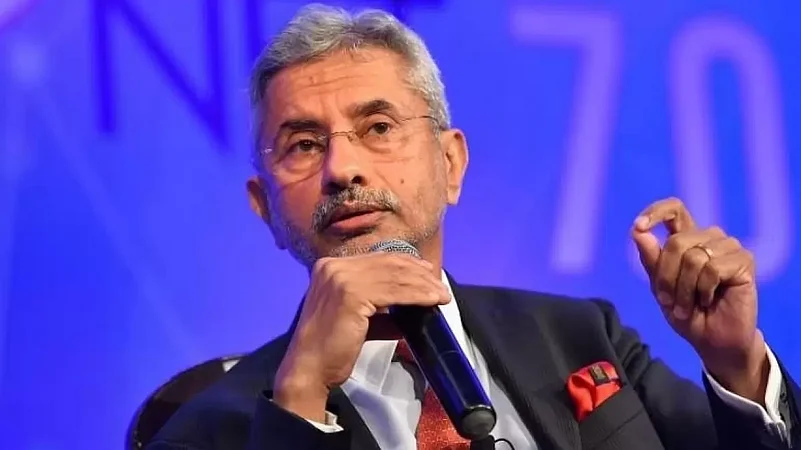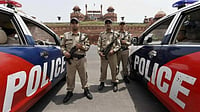A day after China published a map showing India's Aksai Chin and Arunachal Pradesh as Chinese territory, Minister of External Affairs (MEA) S Jaishankar dismissed it as "abusrd" and said that it's an old habit to issue such maps.
Jaishankar said China has been in a habit of publishing maps claiming others' territories since 1950s and it does not change anything.
China on Monday published an official map showing parts of Ladakh and Arunachal as Chinese territories. It also showed the contested South China Sea and self-governing island of Taiwan as its own territory, which it considers to be a breakaway province.
In an interaction at an event hosted by NDTV, Jaishankar said, "China has even put out maps in the past which claim territories which are not China's and which belong to other countries. This is an old habit of theirs. It is not something new. It started in 1950s. So, just by putting out a map claiming territories, some of which are part of India, doesn't mean. These are very much part of India."
Jaishankar further said that the Government of India is very clear about what the Indian territories are.
"This government is very clear what we need to do to defend our territories. You can already see that on our borders. So, I think there should be no doubt about it. Making absurd claims doesn't make other people's territory yours. Let's be very clear on it," said Jaishankar.
China has illegally occupied Aksai Chin, a territory in the far-east of Ladakh union territory (UT), since 1950-60s. China started nibbling land in the region in 1950s and solidified control in the India-China War of 1962 that China won.
"Most of it is in occupation of China, which captured the region during 1950s and consolidated its military grip over the area during the 1962 India-China war, rejecting all Indian attempts to settle border disputes peacefully...China occupied Aksai Chin claiming that it was part of ancient and medieval Chinese empire. It is a convenient claim from an era when boundaries did not have the same sanctity as they do in the times of nation-states," noted Prabhash K Dutta in India Today.
As for Arunachal, China has claimed the state as its own over the decades. Both the claims are rooted in the historic claims of Tibet and the Beijing's claim of ownership of Tibet. As per the Chinese, since Tibet belongs to China, Tibet's territorial claims over Ladakh and Arunachal also belong to China.
In 1959, the then-Prime Minister Jawaharlal Nehru said in Lok Sabha that shortly after Independence in 1947, the Tibetan government had pressed its territorial claims.
Nehru said: "It is true that we received a telegram from the Tibetan bureau in Lhasa, which was forwarded to us by our Mission in Lhasa, claiming the return of Tibetan territory on the boundary of India and Tibet. A reply was sent by us demanding the assurance that it was the intention of the Tibetan government to continue relations on the existing basis until new agreements were reached on matters that either party might wish to take."
The Buddhist monastery at Tawang in Arunachal is key to the Chinese claim there. It considers it part of southern Tibet.
"The larger Tibetan perspective has been that the Tawang monastery is an integral part of the Tibetan Gelug theocratic institution; hence, it can never be parted from Tibet...In effect, Lhasa continued to exert full spiritual and temporal authority over Monyul [Tawang], and British India could do little to enforce the Simla Convention till 1938," notes Phunchok Stobdan in his book The Great Game in the Buddhist Himalayas: India and China's Quest for Strategic Dominance.


























